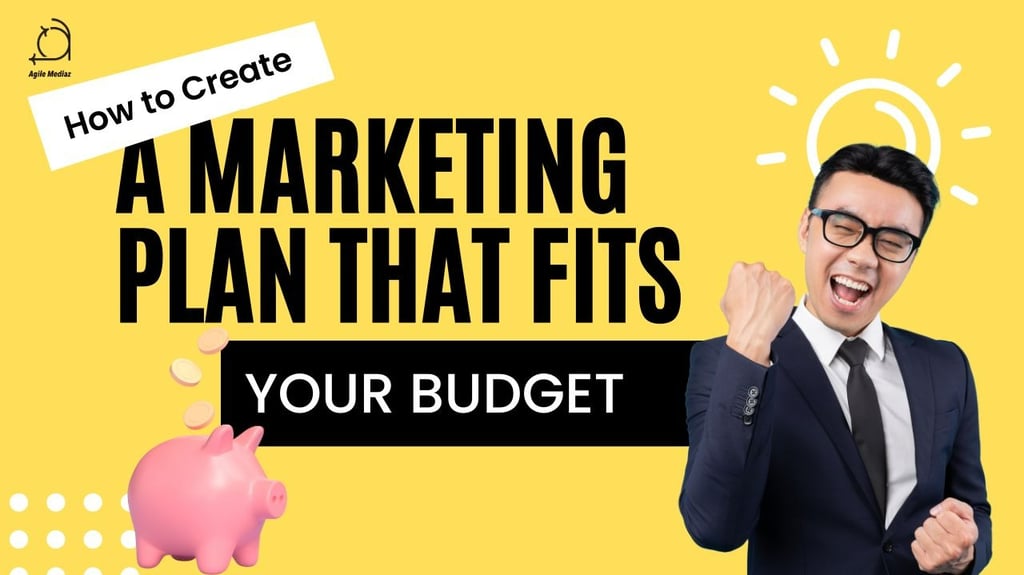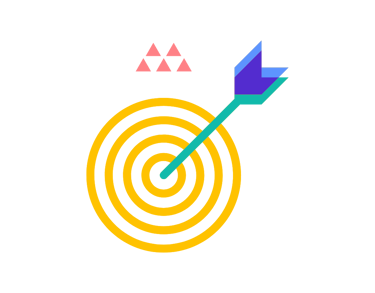How to Create a Marketing Plan That Fits Your Budget
A practical guide for small business owners to create a budget-friendly digital marketing plan that drives results, with step-by-step strategies and expert tips.
BUDGET STRATEGIESSMALL BUSINESSENTREPRENEURSHIPONLINE BRANDINGBRAND CREDIBILITYMARKETING
Agile Mediaz
1/5/20254 min read


For many small business owners, digital marketing can feel like a maze. It’s full of buzzwords, evolving trends, and strategies that often seem designed for companies with deep pockets. But here’s the reality: you don’t need a massive budget to succeed in digital marketing. With the right plan in place, you can effectively reach your audience, grow your brand, and see measurable results—even on a shoestring budget.
In this guide, I’ll walk you through the basics of creating a marketing plan tailored to your needs and budget, giving you actionable steps to take today.
Step 1: Define Your Goals (And Make Them SMART)
Every successful marketing plan starts with clear goals. Without them, it’s easy to waste time and money on efforts that don’t deliver results. But vague goals like “get more customers” won’t cut it. Your goals need to be SMART: specific, measurable, achievable, relevant, and time-bound.
Examples of SMART Goals:
Increase website traffic by 20% over the next three months.
Grow social media followers by 500 in two months.
Generate 50 new leads from email campaigns within six months.
When you set precise goals, you’re better equipped to measure your success and determine where to allocate your limited resources.
Step 2: Know Your Audience Inside and Out
Your audience should shape every decision you make in marketing. To create content and campaigns that resonate, you need to understand who your customers are, what they care about, and how they prefer to engage with businesses like yours.
How to Understand Your Audience:
Create a customer profile.
Outline their age, location, profession, challenges, and preferences. For example: “Lisa, 34, owns a bakery, wants easy social media tips, prefers Instagram for recipes.”Use tools to gather insights.
Platforms like Google Analytics and Facebook Insights offer valuable data about your audience’s demographics and behaviors.Ask your customers.
Surveys, feedback forms, or casual conversations can reveal what your audience wants from you.
Step 3: Focus on Affordable, High-Impact Strategies
Not all marketing channels are created equal. As a small business owner, your time and money are limited, so focus on strategies that provide the most bang for your buck. Here are four budget-friendly approaches to start with:
1. Social Media Marketing
Social media is a powerful tool for connecting with your audience and building your brand—without spending a fortune.
Where to Start:
Focus on platforms where your audience spends their time. If you’re targeting professionals, LinkedIn might be your best bet. For lifestyle brands, Instagram and TikTok could be more effective.Tips for Success:
Post consistently (even 3–4 times a week is enough).
Use free tools like Canva to create eye-catching graphics.
Engage with your audience by responding to comments and messages.
Pro Tip: Experiment with low-cost ads on Facebook or Instagram. Start with a budget of $50–$100/month to test what works.
2. Content Marketing
Content marketing builds trust with your audience by providing value upfront. It’s also one of the most cost-effective strategies because you can do much of it yourself.
What to Create:
Blog posts that answer common questions your audience has.
Short videos showcasing your products, tutorials, or behind-the-scenes moments.
Infographics or guides that solve specific problems.
Why It Works: Content is evergreen—it keeps driving traffic to your site long after you’ve created it. Plus, search engines love fresh, relevant content.
3. Email Marketing
Email marketing remains one of the highest ROI channels for businesses of all sizes. Best of all, it’s incredibly affordable.
Where to Start:
Use free or budget-friendly tools like Mailchimp or ConvertKit.
Build your email list by offering something of value, like a discount, free eBook, or helpful checklist.
Send regular newsletters with tips, updates, or exclusive offers.
Pro Tip: Keep your emails short and visually appealing. Include a clear call-to-action, like “Shop Now” or “Read Our Blog.”
4. Local SEO
If you rely on local customers, optimizing your online presence for local search is a must.
How to Do It:
Claim your Google My Business profile and keep it updated.
Add keywords like “best [your service] in [your city]” to your website and blog posts.
Encourage satisfied customers to leave reviews on Google or Yelp.
Why It Works: Local SEO ensures your business appears when potential customers in your area search for services you offer.
Step 4: Create a Budget That Works for You
Sample Monthly Marketing Budget:
Social Media Ads: $100
Email Marketing Tool: $15
Content Creation (DIY or Freelance): $50
Google Ads (Optional): $50
Use free tools wherever possible, such as Canva for design, Google Analytics for tracking, and Hootsuite for scheduling posts.
Step 5: Track, Measure, and Optimize
Marketing is not a “set it and forget it” activity. Regularly reviewing your efforts ensures you’re making the most of your budget and time.
Metrics to Track:
Website Traffic: Use Google Analytics to see how many people visit your site and where they come from.
Social Media Engagement: Track likes, comments, shares, and follower growth.
Email Metrics: Measure open rates, click-through rates, and conversions.
Sales or Leads: Calculate how many customers or leads your campaigns generate.
Adjust and Improve:
If a strategy isn’t working, don’t be afraid to pivot. Test different approaches, like trying new types of content, adjusting your targeting, or reallocating your budget.
Final Thoughts: Start Small, Stay Consistent
Digital marketing doesn’t have to be intimidating or expensive. The key is to start small, focus on what works, and stay consistent. By following these steps, you can create a marketing plan that fits your budget and drives real results for your small business.
Subscribe to our newsletter for more actionable tips and insights!
Even a modest marketing budget can deliver results if you allocate it wisely. Start small and prioritize strategies that align with your goals and audience.






Connect
Empowering small businesses through digital marketing solutions.
Explore
Innovate
contact@agilemediaz.net
© 2024. All rights reserved.

